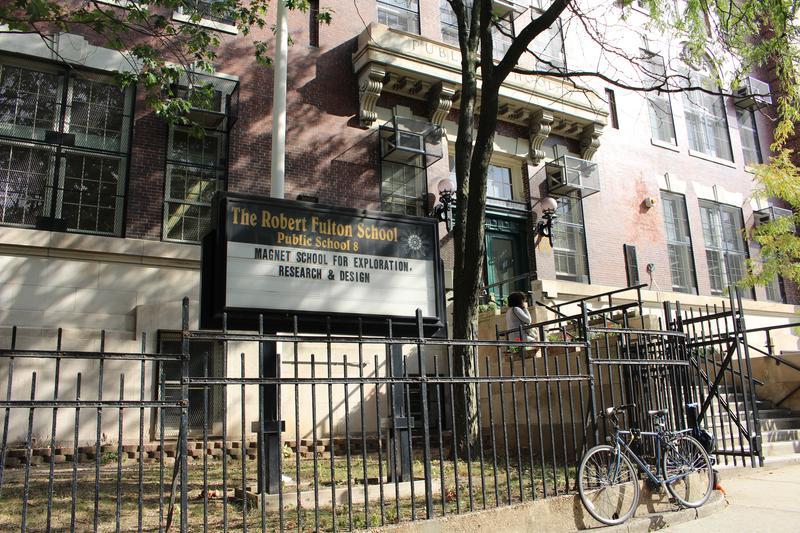
P.S. 307 Daniel Hale Williams, near the Brooklyn Navy Yard, enrolls 70 percent of its students from outside the zone, drawing in families with its magnet program for math and science, dual language classes in Mandarin, violin lessons and a host of enrichment activities and after-school clubs.
“I could go on and on,” said Faraji Hannah-Jones, a PTA co-president and whose daughter is in kindergarten. “There are just so many treasures in that school.”
The zone for the school itself is tiny, covering only Farragut Houses, the public housing apartments across the street. It has never included the growing number of families from the more affluent neighborhoods of Dumbo and Vinegar Hill, just in the school’s backyard. But soon, it could.
The Department of Education is proposing to shift families from Dumbo and Vinegar Hill out of the sprawling zone for P.S. 8 Robert Fulton, a now overcrowded school in Brooklyn Heights.
The rezoning plan is expected to make P.S. 307 — a school that is now about 90 percent black and Latino, and where the vast majority of students qualify for free lunch — a school with a student population that could be up to 45 percent white, according to city projections. And, most likely, more students would come from wealthier families.
It’s a plan that’s raising concerns from both sides: Families who thought they were bound for P.S. 8 question the quality of P.S. 307, pointing to the school’s low test scores. And families from P.S. 307, confident in the quality of their school, worry that families of color eventually will be left out.
“What we have seen from history, from other states and even just up at P.S. 8, that once that progressive movement moves into our school, there’s a push out of parents and students,” said Ben Greene, who co-leads the P.S. 307 PTA.
There are indeed strong parallels between the situation with P.S. 307 now, and how P.S. 8 was viewed in the community, said David Goldsmith, president of the Community Education Council for District 13.
When Goldsmith, a former resident of Vinegar Hill, was ready to enroll his daughter in kindergarten in 2002, P.S. 8 was by and large rejected by those living closest to it. It was considered low performing; primarily students of color attended the school.
Goldsmith and his wife liked the school's environment, and decided to enroll their daughter.
"It was a magnet school just like 307, and families from all across the district, and indeed the city, worked hard and helped build that school," he said.
Eventually the school's demographics began to tip, enrolling more white students from the neighborhood. A majority of the students at the school are now white, and the student body is projected to become less diverse under the city's rezoning plan.
"My biggest fear, and the existing 307 community’s biggest fear, is that a similar thing will happen at 307 that happened at 8," said Goldsmith.
Still, rezoning is desperately needed in the district, he said.
The Department of Education will present its formal proposal to change the school zones to the Community Education Council Wednesday night. CEC members must vote on the proposal by mid-November, in order to allow time to prepare for kindergarten admissions for next fall.
